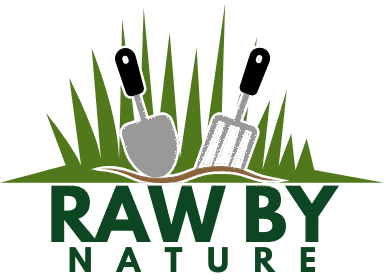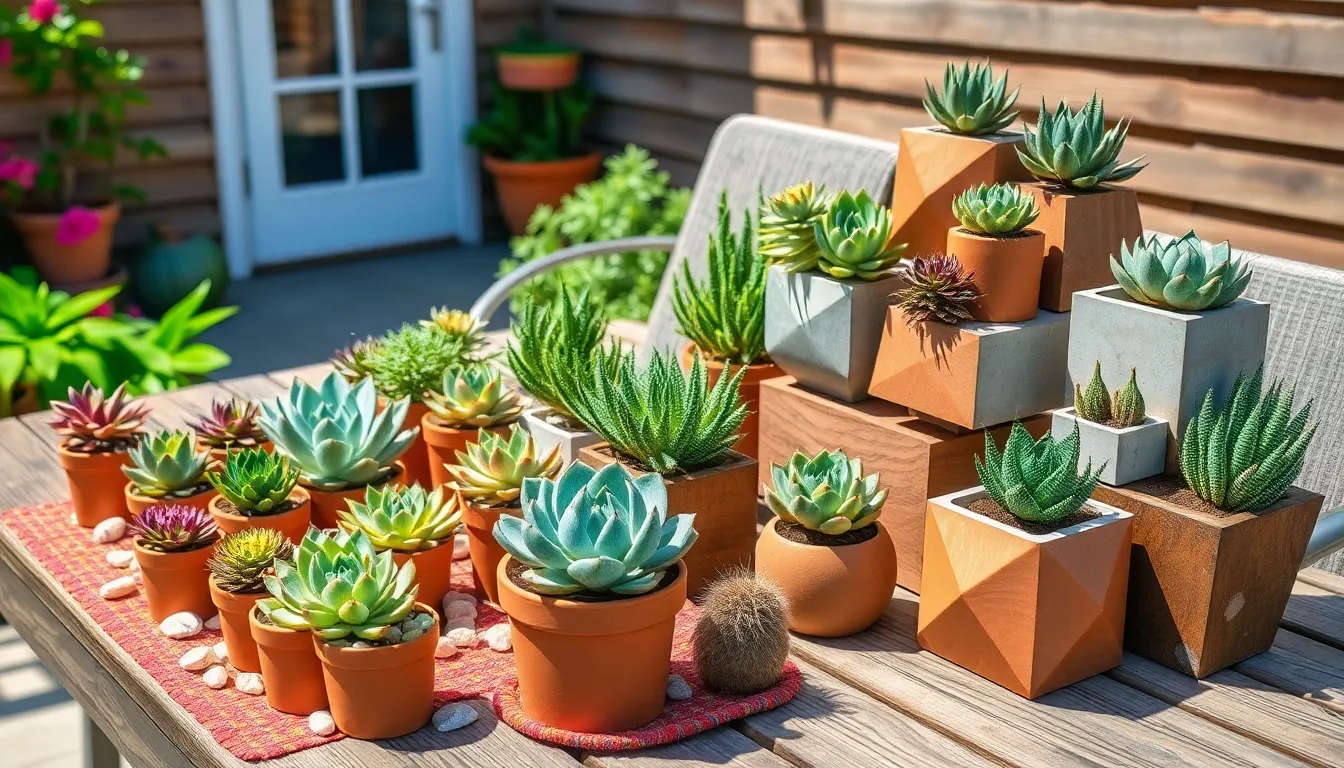Imagine a world where your garden thrives with minimal effort, offering an inviting display of colors and textures that captivate everyone who visits. Welcome to the enchanting realm of succulent arrangements—a perfect marriage of beauty and resilience that even the greenest beginner can cultivate with confidence. These versatile plants offer an opportunity to express creativity while bringing a touch of nature into your home, requiring little maintenance but providing endless joy.
Succulents are not just a passing trend; they’re a testament to the art of gardening made simple and rewarding. Whether you’re a seasoned gardener or just beginning your plant journey, you’ll discover the endless possibilities succulents provide for creating personalized, living art. In this article, we’ll guide you through selecting the right succulents, understanding their basic needs, and arranging them in a way that reflects your unique style.
By the end of this journey, you’ll have the know-how to craft stunning succulent displays that will transform any space. We’ll explore everything from choosing containers and soil to understanding the light and water requirements that ensure your arrangements flourish. Embrace the creativity and joy that succulent gardening brings, and let’s embark on this green adventure together—one beautiful arrangement at a time.
Choosing Beginner-Friendly Succulents
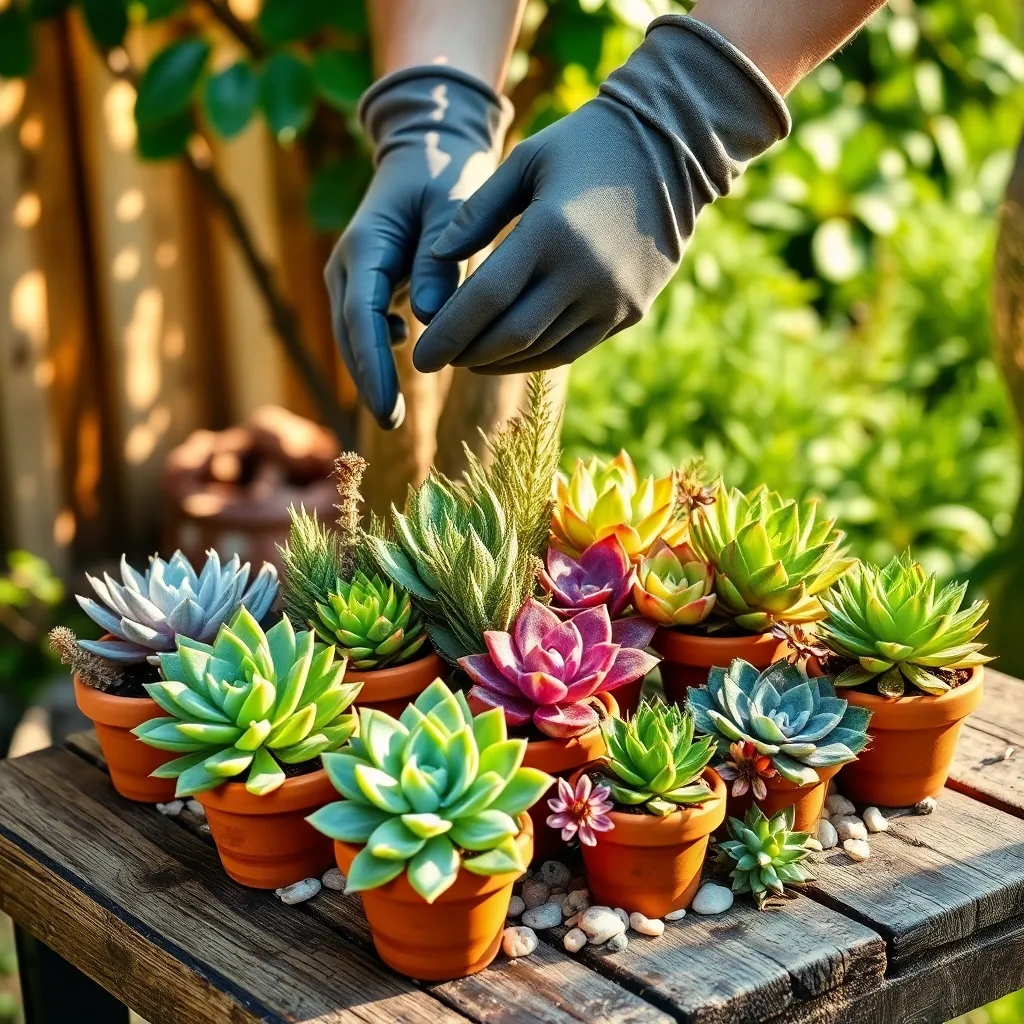
Choosing the right succulents can make all the difference for beginners eager to create stunning arrangements. Jade plant (Crassula ovata), known for its resilience, thrives with minimal care and is an excellent starting point due to its adaptability to various light conditions.
Aloe vera is another fantastic choice, renowned not only for its medicinal properties but also for its forgiving nature. It prefers bright, indirect light and requires watering only when the soil is completely dry, making it a low-maintenance option.
Consider the echeveria species for its attractive rosette form and vibrant colors, which can brighten any arrangement. These plants love plenty of sunlight and need well-draining soil, such as a cactus mix, to prevent root rot.
For those looking to add height to their designs, the snake plant (Sansevieria) offers a striking vertical element. Known for thriving on neglect, it can endure low light and infrequent watering, making it an ideal plant for busy beginners.
Tools Needed for Creative Arrangements
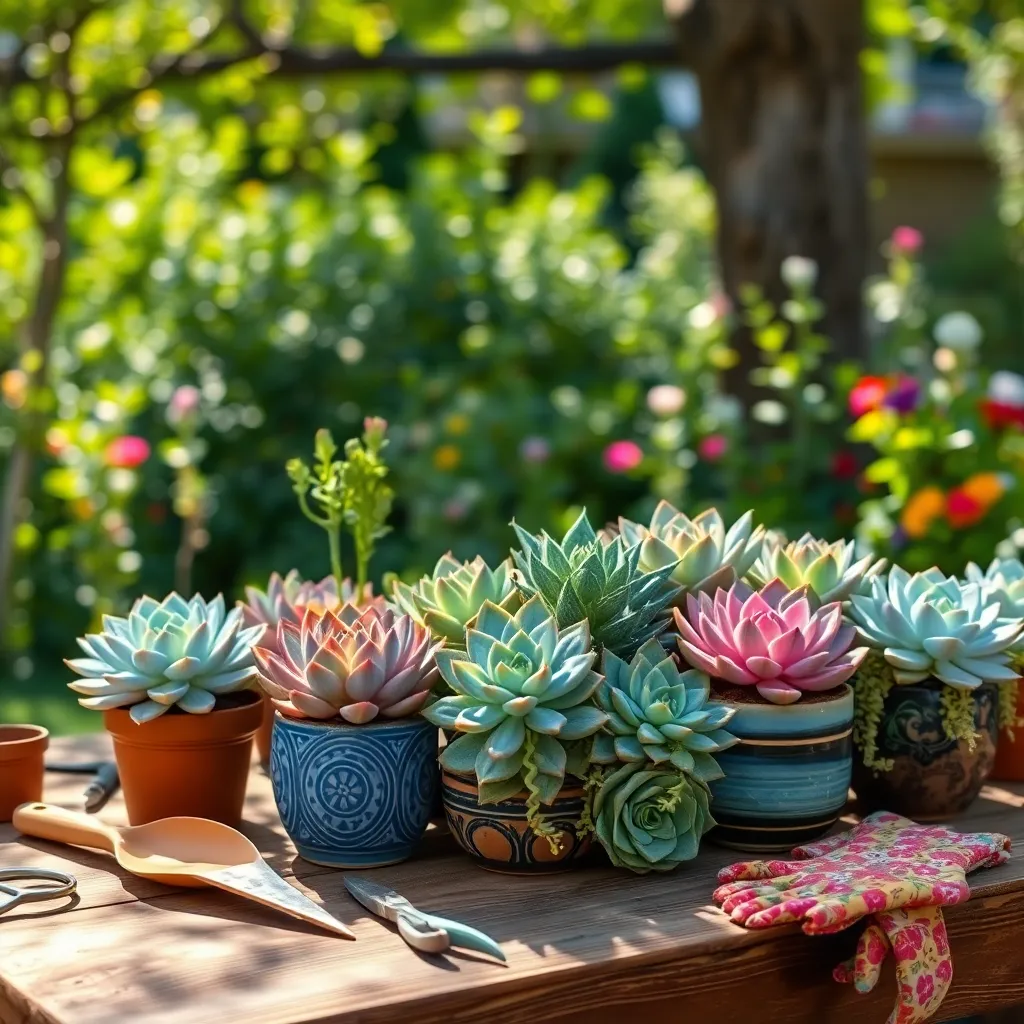
When embarking on your journey to create beautiful succulent arrangements, having the right tools is essential. A few basic tools can make the process easier and more enjoyable, allowing you to focus on the creative aspects of your design.
Start with a pair of high-quality gardening gloves to protect your hands from sharp succulent spines. Opt for gloves that offer flexibility and grip, enabling you to handle delicate plants with ease.
Next, a small hand trowel is indispensable for planting succulents in your chosen container. Choose a trowel with a narrow blade to maneuver easily in tight spaces, ensuring you can plant precisely without disturbing other plants.
In addition to the trowel, a pair of pruning shears will be useful for trimming dead leaves or stems. Look for shears with sharp, clean blades to ensure neat cuts that promote healthy plant growth.
A soil scoop is another handy tool, particularly when working with succulent potting mix. This tool helps you accurately measure and transfer soil into containers without making a mess.
Finally, consider investing in a small paintbrush to clean off excess soil from plant leaves. This simple tool can help maintain the aesthetic appeal of your arrangement and ensure that your succulents remain healthy.
Designing Eye-Catching Succulent Displays
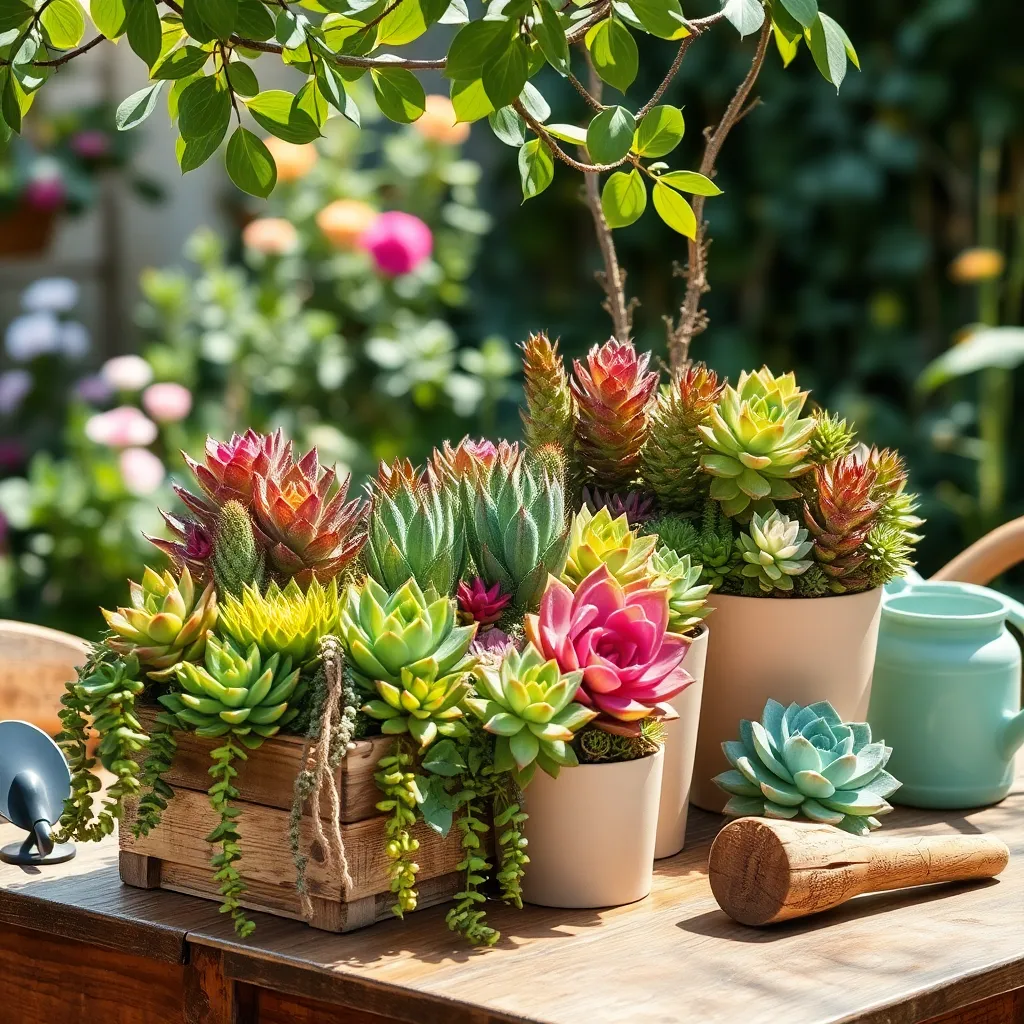
Creating an eye-catching succulent display starts with choosing the right container. Opt for a shallow pot with excellent drainage to prevent root rot, which is common in succulents when they are overwatered.
Next, select a variety of succulents that offer a mix of colors, shapes, and sizes. Consider using Echeveria for rosette shapes and Aloe for height and texture, ensuring a visually appealing contrast.
When planting, arrange the succulents with taller varieties in the center and trailing ones along the edges. This not only looks appealing but also allows each plant to receive adequate sunlight, crucial for their growth.
Use a well-draining soil mix, such as a cactus or succulent blend, to support healthy root development. Enhance the display by adding decorative stones or gravel on top of the soil, which helps to retain moisture and adds a polished finish.
Water your succulents sparingly, allowing the soil to dry out completely between waterings. A good rule of thumb is to water every two to three weeks, adjusting frequency based on the humidity and temperature of your environment.
For a more dynamic display, incorporate accessories like driftwood or small figurines. These elements add personality and can be rearranged easily, offering flexibility to change the look of your arrangement over time.
Step-by-Step Arrangement Techniques

Start by selecting a suitable container for your succulent arrangement, ensuring it has drainage holes to prevent waterlogging. Choose a container that complements your decor and is deep enough to accommodate your succulents’ roots.
Next, fill the container with a well-draining soil mix, such as a blend of cactus soil and perlite or coarse sand. This will provide the optimal conditions for succulents, which require excellent drainage to thrive.
When arranging your succulents, begin by placing the largest plants in the center or at the back of the container. This allows for a natural focal point and gives smaller plants room to grow without being overshadowed.
Incorporate a variety of shapes, colors, and textures to create a visually appealing display. Consider using trailing varieties along the edges and upright ones in the middle to add height and dimension to your arrangement.
Water your succulents sparingly, typically every two weeks, and ensure the soil dries out completely between waterings. Overwatering is the most common mistake, so err on the side of caution to keep your arrangement healthy.
For an advanced touch, consider adding decorative elements like stones or moss to enhance the arrangement’s aesthetics. These additions can also help retain moisture and keep the soil in place.
Maintaining Your Succulent Creations
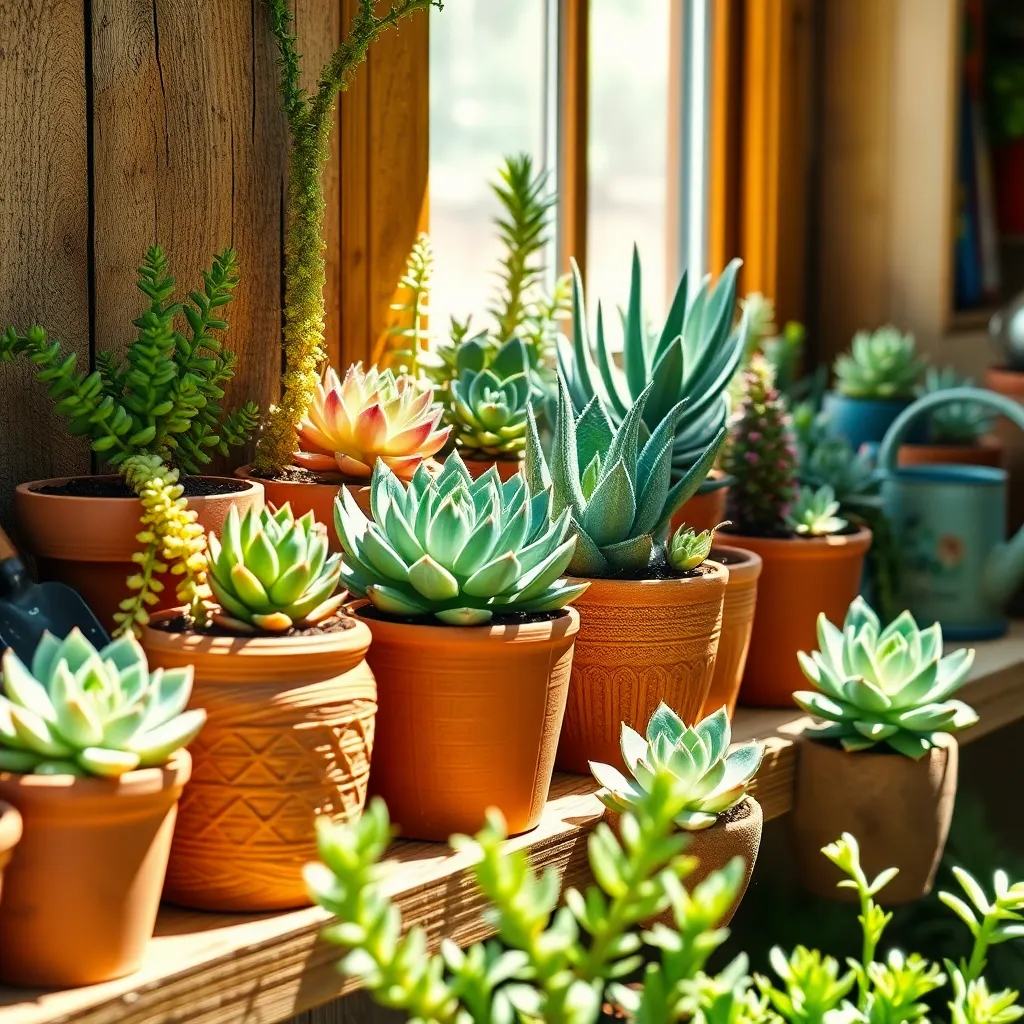
To keep your succulent arrangements thriving, it’s crucial to provide them with the right amount of light. Most succulents prefer bright, indirect sunlight, so consider placing them near a window where they can receive ample light without being scorched.
Watering is another key aspect of succulent care, and it’s important not to overdo it. Wait until the soil is completely dry before watering again, and ensure that your containers have drainage holes to prevent root rot.
Choosing the right soil is essential for maintaining healthy succulents. Use a well-draining cactus mix or create your own by combining potting soil with sand or perlite.
Fertilizing succulents can be beneficial, but it should be done sparingly. Apply a diluted, balanced fertilizer during the growing season, typically spring and summer, to support healthy growth without causing harm.
For those looking to take their succulent care to the next level, consider rotating your plants regularly. This ensures even growth and prevents them from leaning towards the light source.
Pay attention to the signs your succulents give you, as they can indicate their needs. Wrinkled leaves may suggest under-watering, while mushy leaves could be a sign of over-watering, prompting adjustments in care.
Conclusion: Growing Success with These Plants
In exploring the world of creative succulent arrangements for beginners, we’ve delved into five key relationship concepts: the importance of nurturing and patience, the beauty of diversity, the art of balance and harmony, the power of adaptability, and the joy of shared growth. These principles not only apply to cultivating vibrant succulent displays but also serve as valuable lessons for nurturing thriving personal relationships.
As a tangible next step, choose one succulent to start your arrangement and reflect on which relationship concept it represents to you. Let this serve as a gentle reminder of your commitment to fostering your relationships with care and creativity.
Remember, personal growth and relationship success are journeys, not destinations. Bookmark this article to revisit these concepts and refresh your approach to both your plant and human connections regularly.
By embracing these principles, you’re setting the stage for enduring, meaningful relationships. Empower yourself to cultivate connections that flourish and grow, just as your succulent arrangements will. Here’s to a future filled with thriving relationships and the joy of shared experiences.
